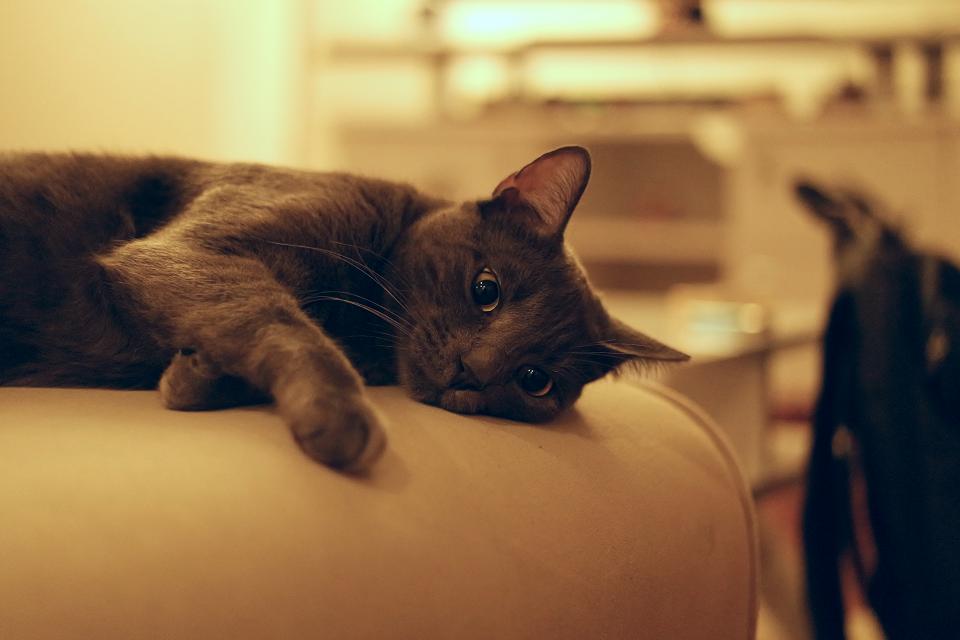Ringworm in cats is an infection of the skin, hair or claws that is caused by a fungus known as a dermatophyte. Dermatophytes grow only in the dead cells of skin and hair. The infection stops on reaching living cells or inflamed tissue. The name ringworm can prove to be very misleading, as it’s not caused by a worm, and the lesions are not always ring-shaped.
Some species of dermatophytes are species-specific, meaning they will only infect one species, while other types can be spread between different species of animals or from animals to humans.
One species called Trichophyton mentagrophytes is zoonotic, meaning it can also infect humans. Ringworm’s appearance varies in cats, with kittens most likely to be infected.
About Ringworm
The incubation period from exposure to development of ringworm lesions can range from 7-14 days and sometimes 21 days before signs of infection develop.
The affected areas can develop into small, solid bumps on the skin (miliary dermatitis) that can be very itchy. Infected cats can have bald, scaly crusted patches and broken hairs.
However, it is sometimes difficult to detect ringworm in cats as the lesions may be very mild or even undetectable. Sometimes the only visible indicator of ringworm is a “cigarette ash” scaling in the depths of the cat’s coat. Sometimes the cat may suffer from hair loss.
However, since there are numerous reasons for a cat to suffer hair loss, your veterinarian will need to test for the cause to see if it truly is ringworm.
This is done by taking a culture of the fungus using hair and skin scrapings. The results can take anywhere from a couple of days to four weeks if it is a slow growing fungus.
Ringworm may also be diagnosed by using a special ultraviolet lamp, a Wood’s lamp, because the majority of feline ringworm cases caused by M. canis will glow a yellow-green fluorescence when examined in a dark room using this lamp.
Ringworm is contagious for the first 48 hours of treatment in people and approximately three weeks after starting aggressive treatment in pets.
Treating Ringworm
Treatment of ringworm is always necessary so as to minimize the risk of spreading the infection to humans, especially children and other pets.
Ringworm is a self-limiting infection in many cases, taking about 5-7 months to resolve. There are topical treatments; creams and lotions are available that can be applied to localized areas of affected skin.
Topical treatment usually takes several weeks or months. A great all-natural product is Oxy-Cat – it can be used both topically and added to food! Best of all, it really works. You can check it out at here.
If you are bathing your cat, please be sure to wash your hands (lather for a full 20 seconds minimum before rinsing) and sanitize the surfaces kitty has come in contact with using a bleach solution. Mix one pint of chlorine bleach in a gallon of water.
Oral treatment maybe recommended by your veterinarian. Griseofulvin is used a great deal for this condition. Other antifungal medications include itraconazol or Lamisil, which have fewer side effects.
A six week regimen is typical, and it is important to use whatever treatment you administer for the fully recommended time to avoid recurrence.
ENVIRONMENTAL CLEANING
It’s extremely important to isolate the affected cat – kitty has infected hairs that contain numerous microscopic fungal spores, and these can be shed into the environment.
It’s best to keep kitty in a room that is easy to clean, such as an extra bathroom. By trimming kitty’s hair (being extremely careful to dispose of the hair in a sealed plastic bag, for example) combined with topical treatment with antifungal medication can help to reduce environmental contamination.
Vacuum floors, carpeting, and furniture to help eliminate fungal spores.
If any people in the house develop skin lesions such as thickened skin with raised scaly edges, one should see a doctor as soon as possible. While this is easily treatable, the ringworm fungus can remain infective for up to 18 months and there could possibly be reinfection. Always wear
gloves when you are in contact with infected animals and wash your hands very thoroughly afterward.
I hope this information will be of help to you, my valued readers!


Recent Comments